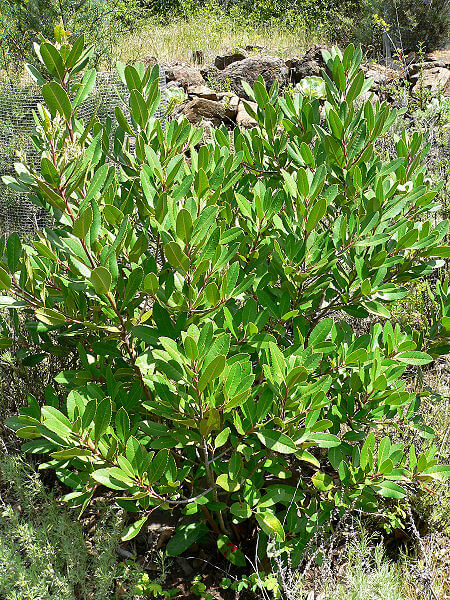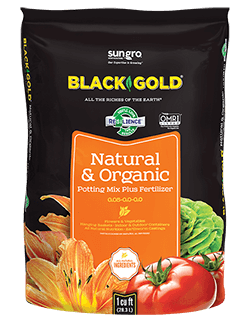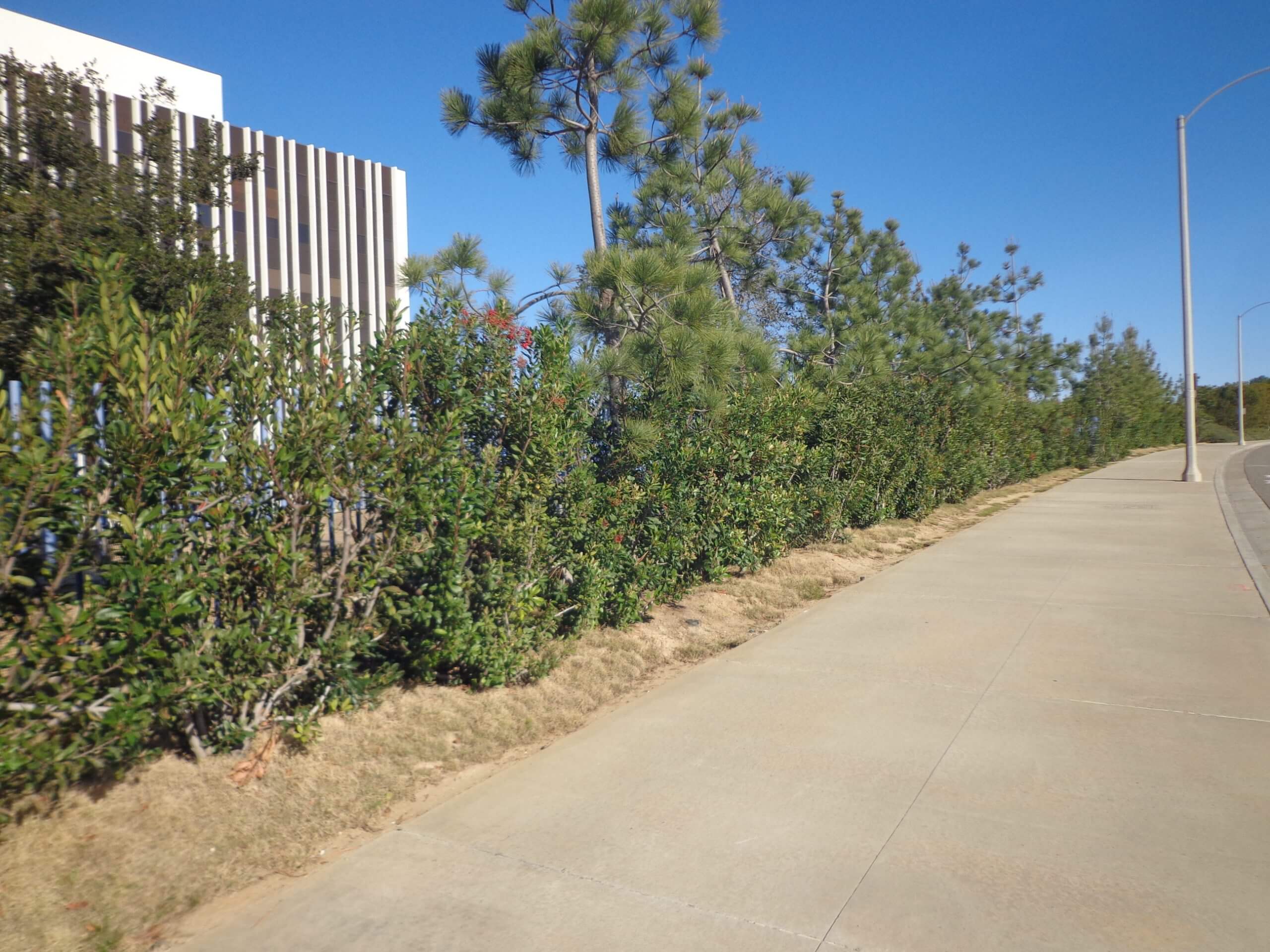
In my old High Sierra home, I decorated with my own native Christmasberry (Heteromeles arbutifolia, USDA Zone 8) fruit every winter for nearly 20 years. Also called California toyon, this shrub produces large sprays of bright red fruits that are so seasonally welcome, I wondered why it was not more popular in landscaping.
Christmasberry makes a fine alternative to Asian Frasier’s photinia (Photinia fraseri), non-native hollies (Ilex spp.), and other exotic evergreens. Deep, emerald-green foliage makes the red fruits really stand out in the winter garden while providing bird habitat all year long. In the High Sierras, the wild evergreens remained unchanged from the end of late-spring rains to December, when the rains returned. That’s a minimum of seven months with no supplemental water!
Potted Christmasberry
Like so many California native shrubs, Christmasberry is difficult to grow commercially in pots because of its deep, wide-spreading root system — the key to its amazing drought resistance. Natives with large root systems rapidly outgrow nursery pots by the end of the first year, when grown from seed. If not transplanted into a deeper pot, the roots will hit the pot bottom and grow sideways.

Distorted tap and feeder roots will keep a growing shrub from achieving proper root depth once planted in the ground. This is why Christmasberry, and comparable native trees and shrubs, are uncommon in garden centers. So many have disproportionate top-to-root growth. A tiny seedling may have a three-foot-deep root system that refuses to adapt to container culture. This was such a problem with California native oaks, that growers finally gave up on trying to pot them and planted acorns instead.
Purchase the smallest, youngest potted plants, if you can find Heteromeles arbutifolia for sale locally. A big plant in a small pot won’t adapt well to drought.
Growing Christmasberry from Seed
Sowing Christmasberry plants from gathered seed is an even better option. Home-grown shrubs can quickly be planted outdoors, allowing the tiny seedlings to freely root into the soil and adapt to local rainfall limitations.
First gather mature, red fruits and clean each one to release the two seeds inside. In my High Sierra home, robins came each year to feed on the fruits, excreting clean, ready-to-germinate seed on my land. To simulate this same scenario at home, separate the seed cleanly from the fruit and allow the seed to dry. This seed will remain viable for only about 8 months.
 Sow the dry seed in winter to get them started, just like wild seed with the spring rains. Choose a light, natural garden soil, such as Black Gold Seedling Mix. Start by filling a plastic lidded salad or fruit box with the fresh mix, and set the seed into the moist media, but don’t cover it. Keep the seeds lightly moist and at room temperature, and they should sprout in about a week. Transplant newly sprouted seedlings into deep pots of Black Gold Natural & Organic Potting Mix. Place them under bright light until they reach 1-inch in height, usually within six weeks. Transplant into the landscape once the soil can be worked to ensure healthy root growth and easy planting. Spring planted seedlings should be deeply watered once or twice, then let them grow on rainfall unless conditions are unseasonably arid.
Sow the dry seed in winter to get them started, just like wild seed with the spring rains. Choose a light, natural garden soil, such as Black Gold Seedling Mix. Start by filling a plastic lidded salad or fruit box with the fresh mix, and set the seed into the moist media, but don’t cover it. Keep the seeds lightly moist and at room temperature, and they should sprout in about a week. Transplant newly sprouted seedlings into deep pots of Black Gold Natural & Organic Potting Mix. Place them under bright light until they reach 1-inch in height, usually within six weeks. Transplant into the landscape once the soil can be worked to ensure healthy root growth and easy planting. Spring planted seedlings should be deeply watered once or twice, then let them grow on rainfall unless conditions are unseasonably arid.
Planting Christmasberry
In the wild, Christmasberry typically grows on rocky slopes with dry, well-drained soils that are sometimes a bit saline. Keep this in mind when selecting a location to plant or sow your shrubs. As long as the roots are free to grow deeply, they will out-perform thirsty hollies and other exotic holiday berries without asking for much, if any, supplemental water.
Mature shrubs are bushy, somewhat shade tolerant, and typically reach 6-10 feet or more. In early summer clusters of white flowers are produced. These are transformed into red, berry-like fruits that persist into winter. Established plants can live up to 200 years.

Other natural, shrubby companions found with Christmasberry are California lilac (Ceanothus spp.), manzanita (Arctostaphylos spp.), western redbud (Cercis occidentalis), and fremontia (Fremontodendron spp.), all of which grew on or near my old property. This is the essential palette of native California shrubs or small trees that promise beauty in drought.
There is no better recommendation for a species to withstand the perpetual “shake, bake, and irrigate” of the West Coast. Christmasberry survives fire and holds slopes against mudslides, according to Lester Rowntree in her classic 1947 book, Flowering Shrubs of California. Lester wrote: “I have seen acres of toyon [Christmasberry], in solid formation, come back after fire from the roots of old bushes, ringing the bases of burned 18-foot stems, standing black and dead, with the bright rich green of new growth.”

